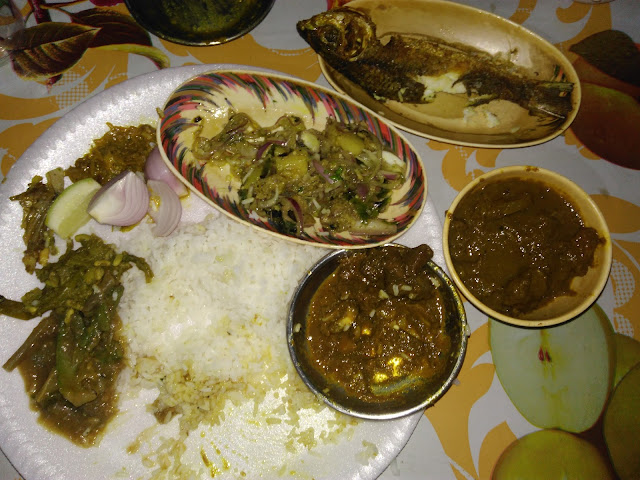Every food trail in Tripura starts with pork and leads to pork. However, to unearth it you need a real explorers will, as the local food culture of the state is being overpowered by the inevitable consequences of the Bangla cultural hegemony. The local cuisine is now being dominated by Bangla delicacies, however, this is not to be confused with the natural give and take evolution that melting pots of culture undergo. This is exactly why this foodies diary demanded a challenging exploration.
The first food stop was at a tiny tea joint, where we were taken by surprise by the cousin version of 'Madakku' an old time Kerala snack.
Shingli Jamathia, a very talented final year student at NIT Agartala instantly realised the kind of places and food we were looking for. He unleashed all his resources to ensure the richness of our experience.
Food, Food and more Food
Through twists and turns and roads narrow, we reached Lalit Bazar, where we attended a Christmas carnival. And there I found what I was looking for. Stalls umpteen,all serving pork, chicken, fish and snail in diverse formats. That means food, food and more food.
Moka
Russian Salad
Washutohan
Our experiments with food continued
Our experiments with food continued.
Right under the mythic Chethuang tree, which is considered a bridge to heaven, was the Dhabha where our next food encounter happened.
The spread here was elaborate, served one by one as in a multi course meal. The dry fish based side chutney , 'gudog' was strong but unique. The baking soda based chutney 'Puhan awandro' is also an essentiality with rice.

Puhan awandro and gudok
Pork boiled with chilli, garlic and ginger.
One interesting feature was the similarity of the chicken and mutton dishes to a typical 'garam masala' based malabar chicken or mutton masala. We attributed this similarity to the possible influence of missionaries from the southern part of the country.
The grand fiesta was at Baishya Mani Para, where we attended a community event and feasted on the sacrificed goat, pig and chicken.Read more here
 Rotis, which is a rarity here has yellow and brown versions. The yellow one is made of maida and the brown of wheat. The end note of this diary can't be nothing else than the percieved class question between maida and wheat.As malabar is busy establishing the villain in maida, this part of the world, from where this diary is noted, considers maida a luxury and that's served only to guests, in their honour. The host would rather restrain to wheat roti.
Rotis, which is a rarity here has yellow and brown versions. The yellow one is made of maida and the brown of wheat. The end note of this diary can't be nothing else than the percieved class question between maida and wheat.As malabar is busy establishing the villain in maida, this part of the world, from where this diary is noted, considers maida a luxury and that's served only to guests, in their honour. The host would rather restrain to wheat roti.
Dennis Debbarma, thank you for the photographs. Teachers this food crazy, was a definite surprise for him. Hambai Dennis and Shingli.










